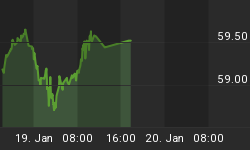The latest edition of LBMA’s Alchemist focuses on the role of central banks in the gold market. Sylvie Goulard, Deputy Governor of Banque de France, wrote the first article, entitled Banque de France and Gold: Past and Future. According to her, the central bank of France has always been a major player in the gold market. Indeed, in the 19th century, Paris was a major gold centre, while Napoleon (20-franc gold coin) was one of the iconic coins of the 19th and 20th century. And, since its creation in 1800, the Banque de France has held one of the largest gold and silver reserves in the world.
Even today, although French people use euro, which is purely fiat currency, the central bank holds about 60 percent of its total reserves in gold! In physical terms, the Banque de France maintains above 2,436 tons of bullion, which places it right behind the podium, as only the US, Germany and Italy (and the IMF) keep more gold in the vaults of their central banks. It means that France’s national gold reserves are valued at around $96 billion, or about 4 percent of the country’s GDP.
The interesting thing is that the Banque de France stores its gold in the famous Souterraine, which is a huge underground vault situated 29 meters below the level of the River Seine, street level (or 40 m below the suspended auditorium).
Removing the Cloak from Central Bank Gold Operations
Another insightful article about the links between central banks and gold is Removing the Cloak from Central Bank Gold Operations by Isabelle Strauss-Kahn, who is a consultant now, but previously worked for the Banque de France, the World Bank, and the Bank of International Settlements.
She describes a few interesting periods of the gold market. One of them is the so-called Brown Bottom, or the sale of more than half of the UK’s gold reserves in a series of auctions to be operated by the Bank of England. The price of gold dropped as a result, as the sales exacerbated the fear that some big gold holders, such as European central banks would follow, especially in the context of introduction of the euro, and the price of gold would collapse. This is why the first Central Bank Gold Agreement was signed in Washington DC on 26th of September Related: Holiday Season Brings Little Cheer To Gold Markets
1999 to limit official sales and reduce uncertainty in the market, setting the psychological stage for the next gold bull market.
The author concludes that central banks still do consider gold as a reserve asset which is useful to hold, even if it does not pay any dividend or a high return.
Recession, Rates, and the US Retail Investor
The last article we would like to discuss is the Recession, Rates, and the US Retail Investor by Suki Cooper, Precious Metals Analyst at Standard Chartered Bank. The article is not about central banks, but it provides a few interesting insights about the gold market outlook. For example, she forecasts US GDP growth to slow to 2.6 from 2.9 percent in 2018. Given that we are unlikely to see a recession in 2019 in the US, while inflation will not rise much above the Fed’s target, gold prices will not rally significantly. However, the author maintains positive outlook for gold prices and expects them to trade towards $1,300 per ounce over the coming months.
The justification for the bullish forecast is that the Fed should enter the final stages of its hiking cycle, possibly falling behind the curve. But the US central bank does not seem to want to drop its policy of gradual tightening of its monetary policy. The trade wars are also cited as a supportive factor. However, the impact of geopolitical risks on gold prices is often overstated. Surely, if the renewed tensions between Russia and Ukraine transform into something larger, we could see a short-term gains in gold. But investors should remember that numerous risks have recently failed to trigger a flight into gold. Stay tuned!
By Arkadiusz Sieron for Sunshine Profits
More Top Reads From Safehaven.com:
















